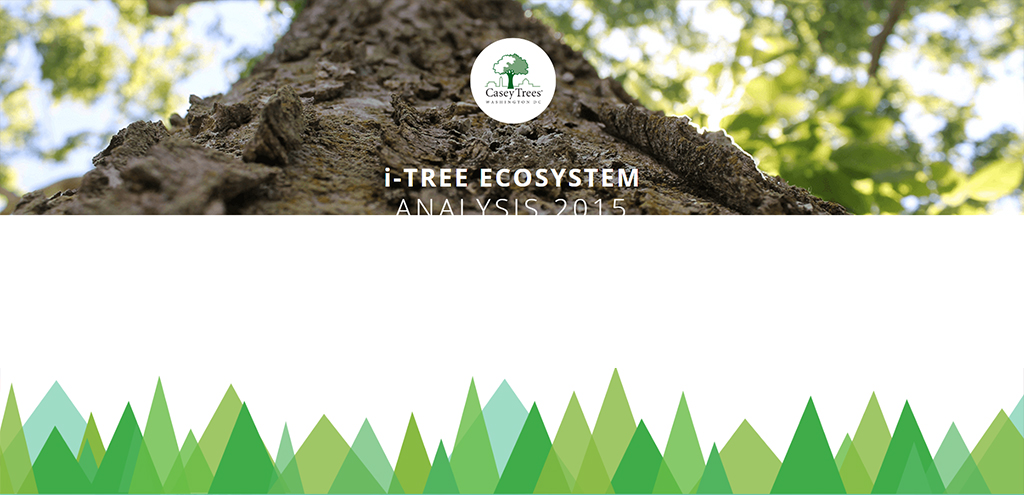THE LEAFLET

i-Tree Eco: Quantifying the Value of Our Urban Forest
Hopefully, we all know the benefits of a healthy urban canopy – between shade, beautifying communities, stormwater management, mitigating climate change, trees do a lot for us. But how can we quantify all they do? Enter i-Tree. We chatted with resident i-Tree guru Arielle Conti, an Urban Forestry Research Associate in our Technical Services & Research team to learn some more:
Casey Trees (CT): So just what is the i-Tree Ecosystem Analysis?
Arielle Conti (AC): The i-Tree Ecosystem Analysis, or i-Tree Eco for short, is a study that helps paint a more complete picture of our urban forest, from the ground up. We have really great aerial imagery of D.C.’s urban forest, which tells us how much canopy we have but iTree Eco sheds light on the composition and health of that canopy. We can then use that information to make better management decisions regarding our trees.
The other cool thing about this study is that it quantifies the benefits trees provide. We know they give us things like shade, they filter stormwater, remove air pollution and sequester carbon. This program uses environmental economic concepts and urban forestry research to put a monetary value on those things. We can then use that information to better advocate for trees – because money talks.
CT: That sounds all good and great, but why should I care about this?
AC: Trees are an important public good that most residents take for granted. They provide incredible benefits simply by being in the ground, and everyone living in this city should take time to appreciate them. They cool your home, they clean the air you breathe and they provide much-needed respite from the brutal summers we face. Can you imagine D.C. without trees? Is that a place you’d want to live or work in?
CT: Did anything surprise you about the results?
AC: This is the third time we have done this study, it was conducted in 2009 and 2004. The results were similar, but surprisingly the top three species composition changed. This year, we added Box elder to the list which was interesting and unexpected. (The other two are American beech and Tulip tree.)
CT: Do you have a favorite statistic?
AC: I love that our trees filter the equivalent of 502 Olympic size swimming pools every year. I was a swimmer so that stat resonates with me. Next time you’re walking through a park or along a sidewalk think about the fact that under your feet there are tiny hair-like roots taking up water and harmful toxins so they don’t end up in the Anacostia or Potomac Rivers.
CT: What is the #1 thing people should take away from iTree?
AC: D.C.’s trees, as they stand are worth about $4.28 billion. That’s billion. With a B.
CT: This sounds super cool! How can I get involved or what can I do to help?
AC: We had citizen scientists help collect this data in 2015 and will be doing the same in 2020. If you’re interested, email treestudy@caseytrees.org and we’ll make sure you’re on the list to receive training and study participation materials. More immediately, you can use this information to inform yourself about the value of D.C.’s trees so you’re better equipped to advocate for them!